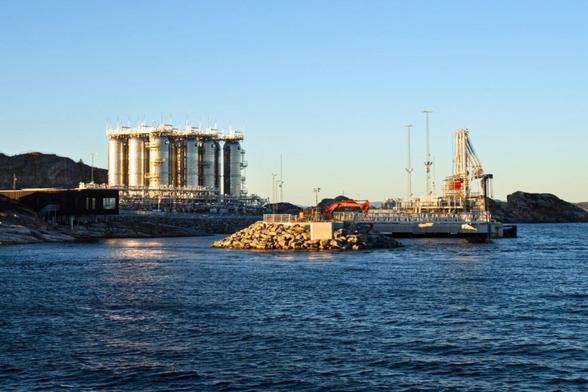How U.S. Energy Policy Shaped Global Stability: Ed Hirs on Oil, Geopolitics, and Economic Strategy
Author(s): Scott Douglas Jacobsen
Publication (Outlet/Website): The Good Men Project
Publication Date (yyyy/mm/dd): 2025/07/03
Ed Hirs is a Yale-educated energy economist and an Energy Fellow at the University of Houston, where he teaches undergraduate and graduate courses in energy economics. Known for his precise, nonpartisan analysis, he is a trusted voice on energy markets, corporate governance, and public policy. Hirs frequently contributes to national and international media and co-chairs the Yale Alumni in Energy conference, promoting fact-based dialogue on global.
Scott Douglas Jacobsen: The United States has a long and complex modern history with the oil industry, particularly in terms of its role in geopolitics and energy policy. How did the U.S. position itself from the mid-to the late twentieth century in terms of energy policy—particularly concerning oil, coal, and natural gas—and how did it leverage that position to project stability in various parts of the world?
Ed Hirs: Since World War II, oil has been central to U.S. foreign and domestic policy. Japan’s attack on Pearl Harbor in 1941 occurred after the United States imposed an oil embargo on Japan in response to its invasion of French Indochina. While the blockade was not the sole cause, it was a key factor that accelerated Japan’s decision to strike. General Dwight D. Eisenhower, Supreme Allied Commander in Europe, prioritized securing oil supply lines and refineries in the Middle East and North Africa to disrupt Nazi access to critical hydrocarbon resources.
In 1956, during the Suez Crisis, after Egypt’s President Gamal Abdel Nasser nationalized the Suez Canal, Britain, France, and Israel launched a coordinated military intervention to regain control of the canal. They expected U.S. support, but President Eisenhower opposed the action and demanded their withdrawal. He believed that global oil markets would adjust, with tankers rerouting around the Cape of Good Hope, and that military intervention was not warranted for short-term logistical disruptions.
Eisenhower also understood that market forces would prevail—nations would purchase oil from whoever could produce and sell it reliably.
In 1959, Eisenhower implemented the Mandatory Oil Import Program (MOIP), which imposed quotas limiting foreign oil imports to protect domestic producers and ensure national security. This led to U.S. oil prices being significantly higher than global prices for over a decade. These protections remained in place until 1973 when President Richard Nixon—Eisenhower’s former Vice President—began dismantling the import quotas amid rising energy demands and changing geopolitical dynamics. Nixon pursued closer ties with Saudi Arabia and other OPEC members, offering security guarantees in exchange for reliable oil supplies, laying the foundation for the U.S.-Saudi relationship.
Following the 1973 Yom Kippur War, several Arab OPEC members imposed an oil embargo against countries supporting Israel, including the United States. The result was a dramatic spike in oil prices, long gas lines, and inflationary pressure. However, Nixon instituted price controls on domestic oil and refined products in 1971 as part of a broader anti-inflation effort, which remained during the embargo.
This created severe market distortions: refiners that relied increasingly on imported crude oil could not afford to buy it at global market prices and sell refined products domestically at controlled prices. Consequently, U.S. refiners continued to import crude oil but, due to profit constraints, often prioritized selling refined products abroad where prices were not capped—effectively refining oil for the global market rather than the domestic one.
Jacobsen: Let us continue on the domestic and foreign energy trajectory through the Nixon, Carter, Reagan, and Bush administrations. How did the policies of these presidencies shape U.S. energy production, consumption, and geopolitical engagement—particularly concerning domestic oil incentives, OPEC, and major conflicts in the Middle East?
Hirs: The Nixon–Ford White House made oil company executives the scapegoats for the long gasoline lines during the 1970s energy crisis. But the core issue was broader: there were wage and price controls across the entire economy at that time—a period when inflation was around 2%, which seems quaint by today’s standards. These controls removed the economic incentive for U.S. domestic producers since oil prices were capped and could not rise in response to global pressures.
During the Carter administration and continuing into the early Reagan years, the federal government imposed the Crude Oil Windfall Profit Tax. Despite its name, it was not a tax on profits—it was a tax on the difference between the controlled domestic price and the higher global price. The result was a disincentive for domestic production expansion.
The only areas where we saw substantial capital investment and realized production growth were in the Gulf of Mexico and Alaska because these areas were not subject to the oil price caps or the windfall profits tax. Meanwhile, the U.S. extended its defence umbrella across the Middle East for decades, primarily to ensure the steady flow of affordable oil. Much of the diplomatic and military engagement in the region during this era was aimed at keeping OPEC prices low to fuel the U.S. economy.
By the early 2000s, just before hydraulic fracturing began to transform the U.S. oil sector, domestic crude production had declined to around 5 million barrels per day. At the same time, imports had climbed to about 13 to 14 million barrels per day. Today, U.S. consumption is roughly 18 to 20 million barrels per day, depending on the season.
This still makes the U.S. a net importer of between 2 and 6 million barrels per day—not because we lack oil, but because many of our refineries are configured to process heavier crude oils, which we import. Canada supplies between 2 and 4 million barrels per day of heavy crude to the U.S., again depending on seasonal variation. These imports are necessary to match the specific configurations and optimization of our refining infrastructure.
The first Gulf War, under President George H. W. Bush, occurred after Iraq invaded Kuwait in 1990. Kuwait had helped finance Iraq’s long war with Iran. After the war ended, Kuwait demanded repayment. Saddam Hussein’s regime rejected that demand and instead launched a hostile takeover of Kuwait’s oil fields. The U.S. led a coalition response that repelled Iraqi forces and liberated Kuwait.
The second Gulf War was initiated under President George W. Bush, ostensibly to remove Saddam Hussein from power. Many economists and analysts warned against the invasion. William Nordhaus, a Nobel Prize-winning economist, projected that the war could cost the U.S. economy more than $1.2 trillion. The Watson Institute at Brown University later estimated the broader costs of U.S. involvement in the Middle East, including Afghanistan and related security operations, to exceed $8 trillion. The human cost for the U.S. includes nearly 10,000 service members killed and around 40,000 wounded.
This discussion often resurfaces in debates about domestic energy policy. For example, in the context of the Keystone XL pipeline debate, I pointed out—along with others like Alan Greenspan in The Age of Turbulence and Henry Kissinger—that virtually everything in the Middle East revolves around oil: controlling its production, its revenues, and ultimately, its geopolitical leverage.
Jacobsen: Let us discuss the Keystone XL pipeline and how you frame it in economic and geopolitical terms. What were the trade-offs, and how did it relate to broader U.S. energy and foreign policy?
Hirs: I often put this in economic terms. The Keystone XL pipeline would have been a cleaner, more efficient way to transport—at that time—about 750,000 barrels of crude oil per day to U.S. refineries than importing a similar volume via tanker from Saudi Arabia or Venezuela. The Congressional Research Service—part of the Library of Congress—analyzed this and noted that the overall carbon footprint of pipeline transport would likely be lower, and the risk of spills in the Gulf of Mexico would be reduced compared to seaborne shipments.
As an aside, the Canadian government once offered me a passport. They said, “We’d love to have you. You’re the first U.S. academic to support this pipeline publicly—why don’t you come live with us?” I may need to take them up on that someday.
Secretary of State Hillary Clinton approved the Keystone XL pipeline during her tenure at the State Department. However, her boss, President Obama, ultimately chose not to support the project, and it was halted.
If you consider who would have lost from the pipeline’s completion, it would have been countries like Saudi Arabia. That extra tanker per day delivering oil to the U.S. Gulf Coast refineries would have been displaced by Canadian crude. So, there was both economic and geopolitical impact in that decision.
Jacobsen: Let us fast-forward to more recent years—2025 or thereabouts. We see Elon Musk in high-profile meetings with various global players. There is increased engagement with sovereign wealth funds from the Gulf states, and former President Trump’s relationships with Saudi Arabia continue to draw scrutiny. Does this contemporary dynamic follow from the earlier trajectory of U.S. oil diplomacy?
Hirs: Absolutely. Former President Trump used relationships with oil-rich Middle Eastern nations—particularly those with massive sovereign wealth funds—as avenues for securing funding and investment in the United States. After he left office in 2021, his son-in-law, Jared Kushner, received a $2 billion investment from Saudi Arabia’s Public Investment Fund into his private equity firm.
There have been numerous high-value transactions involving Middle Eastern investment in U.S. infrastructure, real estate, and commercial ventures. During his presidency, the Trump administration opened the door to foreign capital flows with minimal restrictions.
One such mechanism is the EB-5 Immigrant Investor Program—often nicknamed the “golden visa”—which historically allowed foreign nationals to obtain green cards by investing $1 million (or $500,000 in rural or high-unemployment areas) in U.S. projects that create jobs. Under Trump, some proposals were floated to expand this threshold to $5 million, potentially streamlining access to permanent residency. While not officially codified to that extent, the rhetoric surrounding the welcome of significant foreign investments grew stronger.
This wave of capital inflows helped fuel apartment construction booms in places like Texas over the past two decades. So yes, energy has always been a geopolitical tool, but increasingly, so is real estate and private equity—funded, in part, by petrodollars.
Jacobsen: How has this pattern of using energy—and now investment policy—as geopolitical leverage been received in international circles? What is the long-term perception of American energy diplomacy?
Hirs: Internationally, it is well understood that energy is indispensable for both economic growth and military capability. During World War II, for example, the U.S. lost millions of barrels in oil shipments during the early stages due to German U-boats torpedoing tankers off the Atlantic coast. That’s one reason the U.S. rapidly constructed domestic pipelines like the Big Inch and Little Big Inch—to transport crude oil overland and avoid maritime losses.
Fast forward to the Obama administration, and energy diplomacy remained central. One lesser-known example is that the administration was reluctant to bomb ISIS-controlled oil fields and refineries in northern Iraq early on—not because of strategic ambiguity but partly out of concern over the environmental consequences of igniting those facilities.
Energy policy has always carried significant geopolitical weight, but it is now intertwined with environmental concerns, foreign investment dynamics, and even infrastructure development—all of which shape how American leadership is perceived abroad.
Jacobsen: Let’s continue the thread from earlier. Once the ISIS-controlled oil infrastructure was removed from their hands, what changed? And how does that compare to recent U.S. efforts—especially under the Biden administration—to constrain other major oil-producing regimes like Russia?
Hirs: Once the attacks in Paris occurred in November 2015, the French government took it upon itself to target and destroy the oil assets under ISIS control. That included refineries, transport routes, and oil fields. Once ISIS lost access to hydrocarbons and to the black-market trade that had been generating hard currency for their operations, the organization began to wither. Without a steady revenue stream from petroleum, they lacked the financial means to sustain themselves as a governing or military entity.
Fast forward to the Biden administration, which has made a concerted effort to limit Russia’s ability to profit from its oil exports following the 2022 invasion of Ukraine. Russia, of course, is one of the world’s top oil producers and exporters. At the time of the invasion, Russia was exporting roughly 7.5 million barrels of oil and petroleum products per day to global markets. Moscow threatened to withhold those supplies, claiming oil prices could spike to $330 per barrel.
Jacobsen: And that figure—$330 a barrel—wasn’t just political posturing, was it?
Hirs: No, it was grounded in solid math. That estimate came directly from a paper my team published. The price elasticity of crude oil is approximately -0.047. That means a 1% reduction in global supply results in about a 20% to 25% increase in price—so if Russia had pulled its 7.5 million barrels per day, which represented roughly 7–8% of global supply, it could’ve driven prices close to $330 per barrel. And yes, we calculated that to the penny.
It was affirming to see that someone had taken the time to read our work and consider it seriously.
Jacobsen: So the paper made an impact?
Hirs: Absolutely. We presented the findings at the Naval Staff College, and it became required reading within certain circles at the Department of Defense.
It was clear that many in the Biden administration were brilliant academics—but none of them had ever leased an acre of land or drilled a well.
They believed a simple price cap on Russian oil would cut off Kremlin revenue. But markets are more complex than that. Russia adapted, found workarounds, and rerouted its oil to buyers such as China and India, often utilizing “shadow fleets” of tankers and alternative currencies. Unfortunately, my skepticism was proven right—again. But I take no pleasure in that. I’d rather the policy be right and successful than be the person proven correct while the strategy fails.
Jacobsen: That’s the downside of being ahead of the curve—you make fewer friends at Christmas.
Hirs: [Laughing] Exactly.
Jacobsen: What did the Trump administration get right in terms of energy policy? Regardless of political affiliation, did they implement anything that aligned with sound economic or environmental reasoning?
Hirs: Yes, they did. One of the more underappreciated moves was approving the ability for individual states to manage their own Class VI carbon capture and sequestration (CCS) well permitting. Class VI wells are used to store carbon dioxide deep underground permanently. The Biden administration, by contrast, stalled or declined to approve state primacy in this area because they saw it as enabling fossil fuel use.
But carbon capture is essential if we want to continue using hydrocarbons responsibly while decarbonizing the energy system. Granting states regulatory authority over these wells streamlines the permitting process, encourages private investment, and accelerates deployment. From a policy and economic standpoint, that move by the Trump administration made complete sense. It aligned with both energy security and climate goals—something that rarely happens in American energy politics.
Jacobsen: Let us pick up where we left off. Some argue that the carbon capture and fossil fuel industries are faltering, but others claim they remain strong. What is the actual state of things? And how does this tie into recent policies from the Trump and Biden administrations, particularly in LNG and hydrocarbon markets?
Hirs: That claim—that the industry is faltering—is not accurate. It is, in fact, a thriving industry. Carbon dioxide comes from a wide array of sources, not just the combustion of gasoline and diesel. And in this respect, the Trump administration has taken some positive steps.
For instance, the Trump administration worked to streamline the permitting process for liquefied natural gas (LNG) export facilities. Many of these had been delayed or paused during the Biden administration—not entirely stopped, but those in earlier planning stages encountered additional hurdles.
The importance of LNG was made painfully clear during the winter of 2022 when Russia invaded Ukraine. Russia assumed that cutting off natural gas supplies to Europe would break European resolve, paralyze their economies, and allow Moscow to take Ukraine with minimal resistance from the EU.
But the world had learned its lesson. The ability of the U.S.—and other global producers—to redirect LNG cargoes to Europe was instrumental in thwarting that energy weaponization. That response was only possible because the U.S. had become a major global hydrocarbon supplier. Now, the Trump campaign is signalling a desire to enhance that capacity further.
Jacobsen: What about Trump’s “drill, baby, drill” rhetoric? Does that hold weight in today’s oil economy?
Hirs: Not really. It makes for a catchy sound bite, but it is not economically sound. The U.S. is a high-cost producer in the global oil market. We are the marginal producer—not the swing producer. The swing producer is the one that can flood or cut off supply to control pricing. The marginal producer fills in gaps at the edges of supply.
Saudi Arabia can produce oil for as little as $5 per barrel in its cheapest fields, and even its higher-cost fields are still profitable at around $30 per barrel. The U.S. cannot win a price war with OPEC or OPEC+ countries. So, while “drill, baby, drill” may energize a crowd, it does not change global oil dynamics. It won’t move the needle.
Jacobsen: Trump has also pledged to lower electricity prices nationwide. Is that promise economically feasible?
Hirs: No, not at all. The reality is sobering. Before we discuss a complete energy transition, we must first consider the current state of the existing infrastructure. Mason Willrich, former co-chair of the California Independent System Operator, estimated that the U.S. would need to invest approximately $2 trillion to maintain the status quo of its electrical grid.
Our coal-fired power plants are, on average, over 50 years old. Natural gas plants average more than 30 years. These facilities are aging and breaking down. Some regional electricity markets have not delivered a return on capital in more than 20 years. We are entering a phase of rising demand and outdated infrastructure that is severely in need of improvement.
If that combination persists, we will soon see a supply gap that the U.S. cannot meet, resulting in the inability to meet the energy needs of both residential and commercial consumers. And to date, the administration—any administration—has not offered a clear or constructive plan to confront this looming challenge.
Jacobsen: Thank you for the opportunity and your time, Ed.
Last updated May 3, 2025. These terms govern all In Sight Publishing content—past, present, and future—and supersede any prior notices. In Sight Publishing by Scott Douglas Jacobsen is licensed under a Creative Commons BY‑NC‑ND 4.0; © In Sight Publishing by Scott Douglas Jacobsen 2012–Present. All trademarks, performances, databases & branding are owned by their rights holders; no use without permission. Unauthorized copying, modification, framing or public communication is prohibited. External links are not endorsed. Cookies & tracking require consent, and data processing complies with PIPEDA & GDPR; no data from children < 13 (COPPA). Content meets WCAG 2.1 AA under the Accessible Canada Act & is preserved in open archival formats with backups. Excerpts & links require full credit & hyperlink; limited quoting under fair-dealing & fair-use. All content is informational; no liability for errors or omissions: Feedback welcome, and verified errors corrected promptly. For permissions or DMCA notices, email: scott.jacobsen2025@gmail.com. Site use is governed by BC laws; content is “as‑is,” liability limited, users indemnify us; moral, performers’ & database sui generis rights reserved.
#CarbonCapture #EnergyDiplomacy #KeystonePipeline #LNGExports #OilEmbargo








